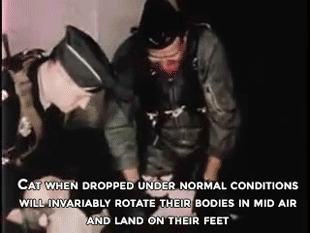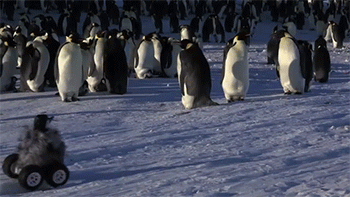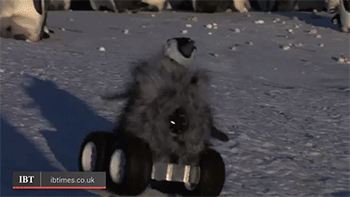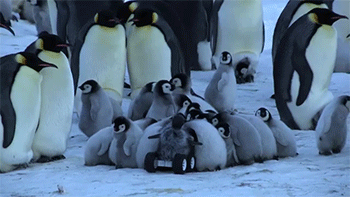Tag Later - Blog Posts

Oh hey, not a big deal, but the hubble took a picture of a star that’s nearing supernova status
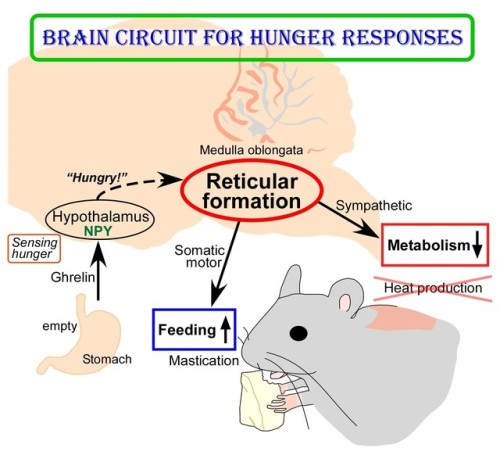
(Image caption: The empty stomach releases the hormone called ghrelin. By receiving ghrelin, the hypothalamus in the brain senses hunger and produces “hunger signaling” through the action of neuropeptide Y (NPY). The hunger signaling activates neurons in the reticular formation of the medulla oblongata, which then inhibit sympathetic output to reduce metabolic heat production and simultaneously provide masticatory motor rhythm to facilitate feeding. Credit: © 2017 Yoshiko Nakamura)
New Insights into Brain Circuit for Hunger Responses during Starvation
The human body responds to starving conditions, such as famine, to promote the chance of survival. It reduces energy expenditure by stopping heat production and promotes feeding behavior. These “hunger responses” are activated by the feeling of hunger in the stomach and are controlled by neuropeptide Y (NPY) signals released by neurons in the hypothalamus. However, how NPY signaling in the hypothalamus elicits the hunger responses has remained unknown.
Sympathetic motor neurons in the medulla oblongata are responsible for heat production by brown adipose tissue (BAT). Researchers centered at Nagoya University have now tested whether the heat-producing neurons respond to the same hypothalamic NPY signals that control hunger responses. They injected NPY into the hypothalamus of rats and tested the effect on heat production. Under normal conditions, blocking inhibitory GABAergic receptors or stimulating excitatory glutamatergic receptors in the sympathetic motor neurons induced heat production in BAT. After NPY injection, stimulating glutamatergic receptors did not produce heat, but inhibiting GABAergic receptors did. The study was reported in Cell Metabolism.
“This indicated that hypothalamic NPY signals prevent BAT thermogenesis by using inhibitory GABAergic inputs to sympathetic motor neurons,” study lead author Yoshiko Nakamura says.
Retrograde and anterograde tracing with fluorescent dyes revealed which brain region provided the inhibitory GABAergic inputs to heat-producing motor neurons.
“Tracing experiments showed that sympathetic motor neurons are directly innervated by GABAergic inputs from reticular nuclei in the medulla oblongata,” corresponding author Kazuhiro Nakamura explains, “selective activation of these GABAergic reticular neurons inhibits BAT thermogenesis.”
The researchers’ further findings showed that GABAergic inputs from medullary reticular neurons are involved in hypothalamic NPY-mediated inhibition of heat production in BAT. This hunger response circuit probably explains why anorexic individuals suffer from hypothermia.
Interestingly, stimulation of these medullary reticular neurons prompted rats to begin chewing and feeding. This effect was similar to injecting NPY into the hypothalamus, suggesting that hypothalamic NPY signaling activates reticular neurons in the medulla oblongata to promote feeding and mastication during the hunger response.
Abnormal activation of these neurons under non-starved conditions may contribute to obesity. Understanding these mechanisms could lead to development of more effective treatments for obesity.

An international team of researchers has finally decoded the science behind a plant responsible for no small degree of human misery: poison ivy.
For the first time, we now know why poison ivy leaves – the bane of campers, hikers, and overly curious kids alike – make us itch, and the answer lies in a key molecule called CD1a, which scientists have long known about but didn’t fully understand until now.
“For over 35 years we have known CD1a is abundant in the skin,” says researcher Jerome Le Nours from Monash University in Australia. “Its role in inflammatory skin disorders has been difficult to investigate and until now has been really unclear.”
One of the reasons for that lack of clarity has been that many experiments on skin disorders involve animal testing – specifically lab mice. And mice don’t produce CD1a, effectively creating a kind of ‘blind spot’ in the studies up to this point.
To get around this and examine whether CD1a might play a part in how human skin reacts when we brush up against poison ivy (Toxicodendron radicans) and similar rash-inducing plants, the researchers genetically engineered mice that did produce the molecule.
In doing so, the team found that CD1a – a protein that plays an important role in our immune systems – triggers a skin-based allergic reaction when we come into contact with urushiol, the allergen that functions as the active ingredient in plants like poison ivy, poison oak, and poison sumac.
When urushiol interacts with skin cells called Langerhans cells, the CD1a proteins (which are expressed by Langerhans cells) activate the immune system’s T cells. In turn, the T cells produce two proteins – interleukin 17 and interleukin 22 – which cause inflammation and itchiness.
Continue Reading.

Birds developed the unique vocal organ that enables them to sing more than 66 million years ago when dinosaurs walked the Earth, a new fossil discovery has shown.
But the earliest syrinx, an arrangement of vibrating cartilage rings at the base of the windpipe, was still a long way from producing the lilting notes of a song thrush or blackbird.
Scientists believe the extinct duck and goose relative that possessed the organ was only capable of making honking noises.
The bird, Vegavis iaai, lived during the Cretaceous era. Although its fossil bones were unearthed from Vega Island in Antarctica in 1992, it was not until three years ago that experts spotted the syrinx.
All birds living today are descended from a particular family of dinosaurs that developed feathers and the ability to fly.
The new discovery suggests the syrinx is another hallmark of birds that was absent from non-avian dinosaurs…


A fascinating new science experiment proves that we can grow babies outside of their mother’s womb
Keep reading
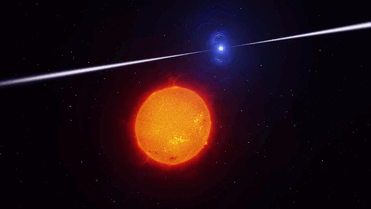
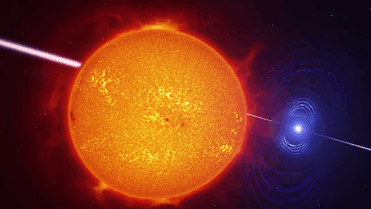
The Scorpii AR system
In the system AR Scorpii a rapidly spinning white dwarf star powers electrons up to almost the speed of light. These high energy particles release blasts of radiation that lash the companion red dwarf star, and cause the entire system to pulse dramatically every 1.97 minutes with radiation ranging from the ultraviolet to radio.
The star system AR Scorpii, or AR Sco for short, lies in the constellation of Scorpius, 380 light-years from Earth. It comprises a rapidly spinning white dwarf, the size of Earth but containing 200,000 times more mass, and a cool red dwarf companion one third the mass of the Sun, orbiting one another every 3.6 hours in a cosmic dance as regular as clockwork.
Read more at: cosmosmagazine / astronomynow

A dash of graphene can transform the stretchy goo known as Silly Putty into a pressure sensor able to monitor a human pulse or even track the dainty steps of a small spider1.
The material, dubbed G-putty, could be developed into a device that continuously monitors blood pressure, its inventors hope. It also demonstrates a form of self-repair that may herald smarter graphene composites.
Since graphene was first isolated in 2004, researchers have added these atom-thin sheets of carbon to a panoply of different materials, hoping to create composites that benefit from its superlative strength and electrical conductivity. But there have been surprisingly few attempts to blend it with ‘viscoelastic’ materials such as Silly Putty, which behaves as both an elastic solid and a liquid. Leave a lump on top of a hole, for example, and it will slowly ooze through.
Conor Boland, a researcher working in Jonathan Coleman’s nanotechnology lab at Trinity College Dublin, wondered what would happen if he brought the two materials together. “I’d like to be able to say it was carefully planned, but it wasn’t,” laughs Coleman. “We’ve just got a tradition in my group of using household stuff in our science.” (In 2014, his team found that they could make graphene by blitzing graphite in a kitchen blender2).
Continue Reading.

Feb 28, 2013 - By wearing different colored hats, over 2,600 employees at Genentech (in San Francisco) celebrated the 60th anniversary of the discovery of DNA
Blind people gesture (and why that’s kind of a big deal)
People who are blind from birth will gesture when they speak. I always like pointing out this fact when I teach classes on gesture, because it gives us an an interesting perspective on how we learn and use gestures. Until now I’ve mostly cited a 1998 paper from Jana Iverson and Susan Goldin-Meadow that analysed the gestures and speech of young blind people. Not only do blind people gesture, but the frequency and types of gestures they use does not appear to differ greatly from how sighted people gesture. If people learn gesture without ever seeing a gesture (and, most likely, never being shown), then there must be something about learning a language that means you get gestures as a bonus.
Blind people will even gesture when talking to other blind people, and sighted people will gesture when speaking on the phone - so we know that people don’t only gesture when they speak to someone who can see their gestures.
Earlier this year a new paper came out that adds to this story. Şeyda Özçalışkan, Ché Lucero and Susan Goldin-Meadow looked at the gestures of blind speakers of Turkish and English, to see if the *way* they gestured was different to sighted speakers of those languages. Some of the sighted speakers were blindfolded and others left able to see their conversation partner.
Turkish and English were chosen, because it has already been established that speakers of those languages consistently gesture differently when talking about videos of items moving. English speakers will be more likely to show the manner (e.g. ‘rolling’ or bouncing’) and trajectory (e.g. ‘left to right’, ‘downwards’) together in one gesture, and Turkish speakers will show these features as two separate gestures. This reflects the fact that English ‘roll down’ is one verbal clause, while in Turkish the equivalent would be yuvarlanarak iniyor, which translates as two verbs ‘rolling descending’.
Since we know that blind people do gesture, Özçalışkan’s team wanted to figure out if they gestured like other speakers of their language. Did the blind Turkish speakers separate the manner and trajectory of their gestures like their verbs? Did English speakers combine them? Of course, the standard methodology of showing videos wouldn’t work with blind participants, so the researchers built three dimensional models of events for people to feel before they discussed them.
The results showed that blind Turkish speakers gesture like their sighted counterparts, and the same for English speakers. All Turkish speakers gestured significantly differently from all English speakers, regardless of sightedness. This means that these particular gestural patterns are something that’s deeply linked to the grammatical properties of a language, and not something that we learn from looking at other speakers.
References
Jana M. Iverson & Susan Goldin-Meadow. 1998. Why people gesture when they speak. Nature, 396(6708), 228-228.
Şeyda Özçalışkan, Ché Lucero and Susan Goldin-Meadow. 2016. Is Seeing Gesture Necessary to Gesture Like a Native Speaker? Psychological Science 27(5) 737–747.
Asli Ozyurek & Sotaro Kita. 1999. Expressing manner and path in English and Turkish: Differences in speech, gesture, and conceptualization. In Twenty-first Annual Conference of the Cognitive Science Society (pp. 507-512). Erlbaum.
Baby are we subatomic particles in the pull of a quark, because I feel an innate attraction helping us overcome our initial repulsion
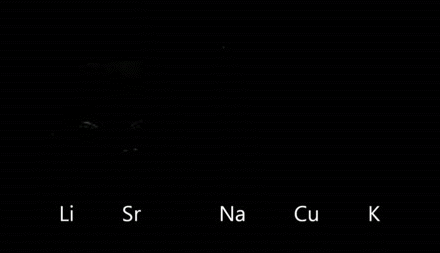
In chemistry, flame tests are used to detect the presence of certain elements, primarily metal ions, by analyzing the colour of the flame given off when heated.
above are Lithium (Li), Strontium (Sr), Sodium (Na), Copper(Cu), and Potassium (K).

Bruh this is some sci-fi shit. Fucking time crystals








